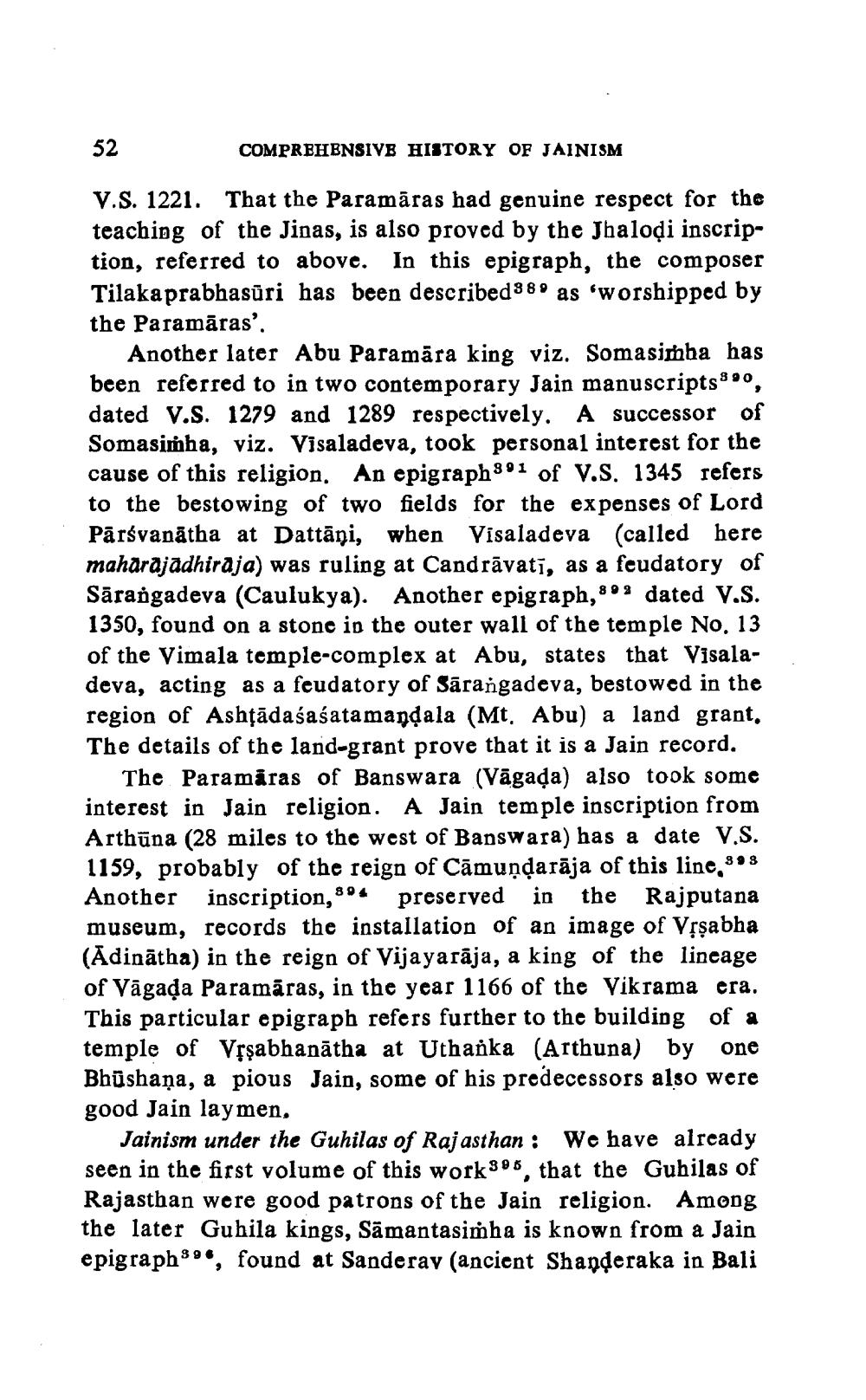________________
52
COMPREHENSIVE HISTORY OF JAINISM
V.S. 1221. That the Paramāras had genuine respect for the teaching of the Jinas, is also proved by the Jhalodi inscription, referred to above. In this epigraph, the composer Tilakaprabhasūri has been described 889 as 'worshipped by the Paramāras'.
Another later Abu Paramāra king viz. Somasimba has been referred to in two contemporary Jain manuscripts", dated V.S. 1279 and 1289 respectively. A successor of Somasimba, viz. Visaladeva, took personal interest for the cause of this religion. An epigraph 901 of V.S. 1345 refers to the bestowing of two fields for the expenses of Lord Pārsvanātha at Dattāni, when Visaladeva (called here maharajadhiraja) was ruling at Candrāvatī, as a feudatory of Sāraigadeva (Caulukya). Another epigraph, 8's dated V.S. 1350, found on a stone in the outer wall of the temple No. 13 of the Vimala temple-complex at Abu, states that Visaladeva, acting as a feudatory of Sārangadeva, bestowed in the region of Ashțādaśasatamandala (Mt. Abu) a land grant. The details of the land-grant prove that it is a Jain record.
The Paramaras of Banswara (Vāgada) also took some interest in Jain religion. A Jain temple inscription from Arthūna (28 miles to the west of Banswara) has a date V.S. 1159, probably of the reign of Cāmundarāja of this line 898 Another inscription, 88. preserved in the Rajputana museum, records the installation of an image of Vịşabha (Ādinātha) in the reign of Vijayarāja, a king of the lineage of Vāgaļa Paramāras, in the year 1166 of the Vikrama era. This particular epigraph refers further to the building of a temple of Vţşabhanātha at Uthařka (Arthuna) by one Bhūshaņa, a pious Jain, some of his predecessors also were good Jain laymen,
Jainism under the Guhilas of Rajasthan : We have already seen in the first volume of this work 386, that the Gubilas of Rajasthan were good patrons of the Jain religion. Among the later Guhila kings, Samantasimha is known from a Jain epigraphs 9., found at Sanderav (ancient Shapderaka in Bali




